I hope you enjoyed reading Part I of our trip to Northern Greece and I hope I will not bore you with this long post, but there were many things I wanted you to see. I am dedicating this post to all my Greek friends who live abroad and would like to find out more about Greece.

Back to our trip. After our lucullan breakfast with bougatsa, at nine o’clock we left Serres for Chalkidiki. A few kilometers outside Serres there was fog and this went on, almost all the day. At some spots the visibility was only for a few metres away so we passed from the outskirts of Thessaloniki and the town was not visible at all.
Going towards Chalkidiki, the fog began to lift. Our first stop was Nea Moudania, a beautiful small town on the sea side.
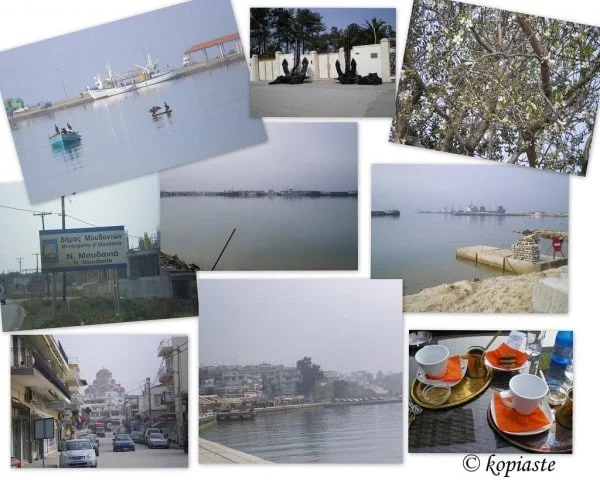
We parked our car near the seaside and walked along the seafront. It was still early and it was time for a cup of coffee. Although the atmosphere was not so clear due to the fog, it was not cold so we sat outside a cafeteria named “SYMBOL” and gazed at the sea.
We ordered our metrio Greek coffee and the waitress came along with a big tray. She took two smaller copper trays and two small copper brikis (pot with handle) and two cups and two glasses. There was a plate with some biscuits and two smaller plates with quince spoon sweet in each, plus a bottle of mineral water. We had the best coffee we ever had and it was so cheap. For all the above we only paid six euros.
We then headed further about half way through the Peninsula which was beautiful, the weather was getting much better but still there was some light fog, so we didn’t stop to take some pictures.
It was still early for lunch so we headed back towards Thessaloniki, as we still had a final stop at the Cave of Petralona (Spilaio ton Petralonon), which is an important link in the chain of human evolution.
The famous Neanderthal is an infant compared to the arhanthropos (arh, from arhaios = ancient and anthropos = man), meaning ancient man.
Unfortunately the Greeks are not capable of promoting their history and culture and they tried to shut down the findings of Aris Poulianos. On the other hand, the Neanderthal is widely promoted and scientists try to prove that in Greece there were no autochthons but they originated from the Indo-European race!!!!.
We had a guide with us who explained everything in detail but I also bought the book of Aris Poulianos with lots of interesting information. It was a pity we were not allowed to take pictures in the cave as it was very beautiful, but we were allowed to take pictures in the museum.
I quote a few things from the site of Gohalkidiki:
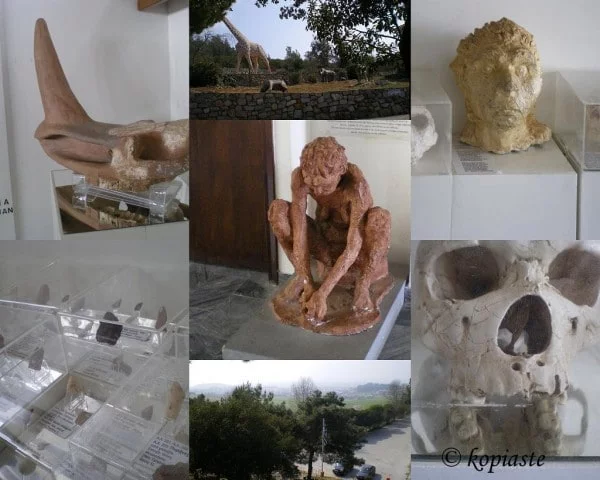
“The cave of Petralona “embellished” with stalagmites and stalactites is located in the west foot of the Katsika (Goat) mountain and in an altitude of about 300 meters from the level of sea. It was found in 1959 by the inhabitant of Petralona, Mr. Philippos Hatzaridis and it became well known all over the world in 1960, when the skull of Arhanthropos was found by another inhabitant of Petralona, Mr. Christos Sarrigiannidis.
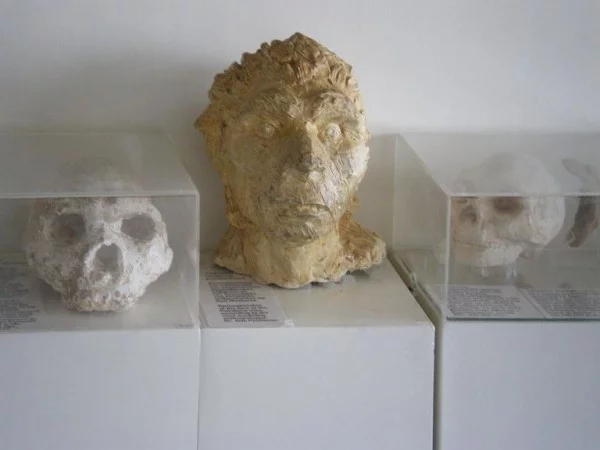
The systematic excavations of the Cave began in 1965 by the founder of the Anthropologic Company of Greece, anthropologist professor Aris Poulianos. His researches proved that the Arhanthropos is about 700.000 years old, and this makes him the “oldest” European.”
“This age was determined after the detailed analysis of stratigraphy (until today 34 geological layer have been revealed), and after studying the primitive and Paleolithic tools as well as the palaiofauna that were discovered in almost all the layers. Among the fossils of animals that have extinct the following are included: lions, hyenas, bears, panthers, elephants, rhinoceros, megakeroi, bison and various species of deer and hippo, and also 25 species of birds, 16 species of rodents and 17 species of bats.
In order to verify the age, the contribution of nucleonic is very important. (This is the reason we were not allowed to take any photos inside the cave). The materials that have been dated are bones, argil, stalagmites and ashes. These are fire traces – the oldest ones that human have ever lighted”.
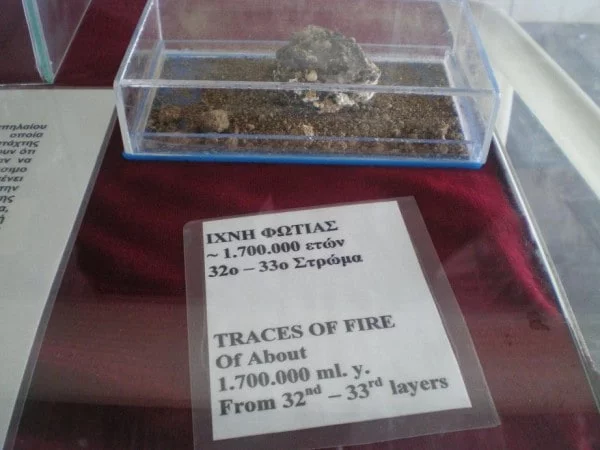
The “Protoglypton of Macedonia”, meaning “first sculpture” .
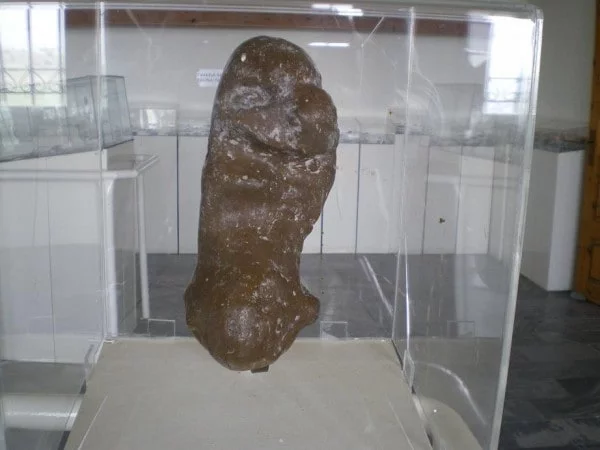
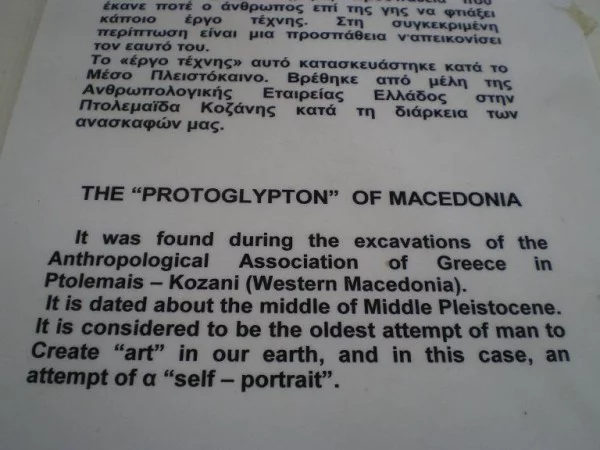
If you ever visit Thessaloniki or Chalkidiki this is something you must not miss.
Thessaloniki is the second largest city of Greece and the capital of the region of Macedonia.
We were planning to take the coastal road towards Thessaloniki but after Petralona we took a wrong detour which lead us to the motorway, so we could not stop for lunch.
We arrived at the hotel at about 4 p.m. and we had an appointment to be at the spa at six p.m. We asked the receptionist where we could go for lunch and he told as of some taverns in a small side road off Eleftheriou Venizelou Street.
The weather was good and all the tables outside were occupied. We sat inside but even inside there were a lot of people.
The food and service was great. We were sitting just next to where the owner’s of Rouga Mr. and Mrs. Markos Repas and who were kind enough to give me the recipe of one of the dishes we ate, called Agioritiki Tigania, when I told them that we liked it very much and I would like to post about it. (You will see the recipe soon).
We were back at the hotel just in time for our appointment for the Spa. We had a sauna first and then a facial treatment and ended with a relaxing massage: back, feet and hands. (No pictures here, ha,ha!).
After that we still needed to rest and as it was Tsiknopempti there was a lot going on at Aristotelous Square, just a few metres away from our hotel. Tsiknopempti, which literally means Smelly Thursday (Tsikna is the smell from roasting meat and Pempti means Thursday), is eleven days before Clean Monday and is a way we celebrate by grilling meat before the beginning of Lent when the Orthodox abstain from eating meat. The tradition is to grill meat on that day either at home but because it is during the carnival period, people go out and celebrate at tavernas and the first masqueraders appear. There was a huge carnival street party going on, just a block away from our hotel and street vendors were making souvlakia everywhere.
Ladadika is what remains of the Jewish quarter (Thessaloniki had a huge Jewish population until the war) and took its name from the groceries in the area. Although it survived the great fire, the area was abandoned and degraded but after the earthquake of 1978 the old buildings were restored and now there are many restaurants in that area.
Tsiknopempti is a day when everybody goes out. Unfortunately, we had not made any reservations and had to try a lot of places until we finally managed to get a table, outside!!
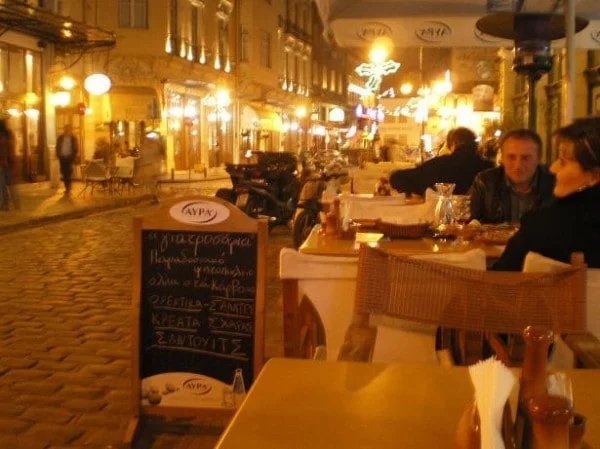
The following day after breakfast we walked from the hotel, which was near Aristotelous square, to the seafront road, which is Leoforos Nikis, towards Lefkos Pyrgos (White Tower). The weather was much better than the previous day and managed to take some pictures.
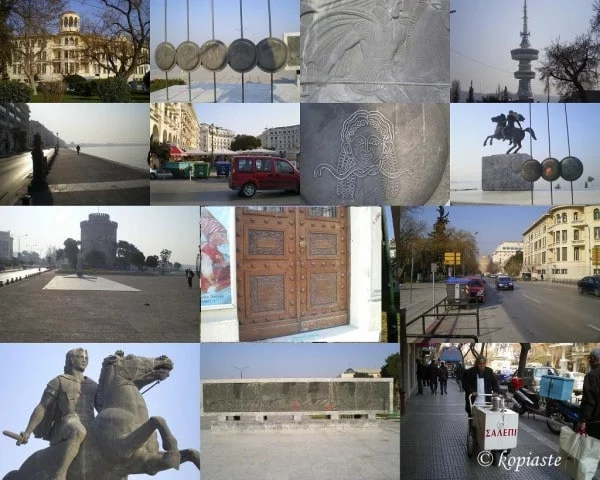
Τhe Tower was for centuries part of the walls of the old city of Thessaloniki and separated the Jewish quarter of the city from the cemeteries of the Muslims and Jews. The city walls were demolished in 1866. Originally constructed by the Ottomans to fortify the city’s harbour, it became a notorious prison and place of execution, covering the walls of the Tower with blood.
According to one source, when the Sultan was planning a visit there they did not want him to see blood everywhere, so a Jewish prisoner named Nathan Guéledi agreed to whitewash it with lime in exchange of his freedom. Since then it was referred to as Beyaz-Kule in Turkish, which meant White Tower. The prison walls surrounding the prison were demolished in 1917.
I’ve been inside the Tower when we used to live in Northern Greece but now it was closed for maintenance so we just took some photos at the Statue of Alexander the Great and headed back for some shopping.
If you take the road Nikolaou Germanou, opposite Lefkos Pyrgos it will take you straight to the O.T.E Tower (Telecommunications Tower), which is a 76 metre high antenna tower. It is located in the International Trade Fair grounds, just a few blocks away from Lefkos Pyrgos. On the tower there is a revolving restaurant/cafeteria, which is worth visiting. Drinking your cup of coffee you have a spectucular, panoramic view of the city as it slowly revolves and you can barely notice it.
On our way back we took Mitropoleos Street and stopped at Aristotelous Square for a cup of coffee. We continued doing some shopping and after leaving the bags at the hotel we took a taxi and went up towards the Acropolis (don’t confuse it with The Acropolis of Athens) as the word akros, akron, in Greek means edge, extremity + polis, city). The highest part of a city was always chosen, for purposes of defense, frequently a hill with precipitous sides, to build a settlement.
During the Byzantine Empire, Thessaloniki was the second largest city after Constantinople. Ano Polis (the Upper city) is one the pretiest areas of Thessaloniki. We walked through small alleys , with old houses, from where you could see the whole city.
At the top of the Old Town are the old walls of Thessaloniki and Eptapyrgion. Part of the Byzantine Walls around the city which were built on older walls, by Emperor Theodossius (379 – 395), still survive. There are towers still standing at the corners that provide a breath taking view of the whole city of Thessaloniki and the sea. Just next to the walls going towards the city center there are the Gardens of Pasa, a lot of small squares where children play, kafenia (local coffee houses) where people relax, meeting friends and chatting while having a cup coffee and playing tavli (backgammon).
Eptapyrgion or Yeti Kule, as it is known by its Turkish name, which in both languages means the Seven Towers, although it actually has ten. The Byzantine fortress was later restored during the Ottoman empire and served as the major redoubt of the city’s acropolis, as well as the seat of its garrison commander in Ottoman times, until the late 19th century.
During the 1890s, the fortress was converted into a prison. The prison was for long the main penitentiary facility of the city, and housed all convicted, regardless of sex or crime. New buildings were built along both sides of the walls, to fulfill the various needs of the fort’s new role (Φυλακές Επταπυργίου). The prisons remained open until 1989.
We were told that there are a lot of tavernas around the walls with delicious food but it was still early for lunch, so after walking around the narrow streets and taking pictures we headed back, this time taking the bus.
We stopped at the Church of Aghios Demetrios (Saint Demetrius) who is the patron saint of Thessaloniki. Saint Demetrius was born in 284 AD in Thessaloniki and died a martyr 305 AD to his Christian faith after orders of Roman Emperor Diocletian (Dioklitianos) . When Constantine the Great, the first Roman Emperor to convert into a Christian, gave an end to the persecutions of the early Christians (324 AD), a small church was built at the place of his martyrdom, near the ruins of the old Roman baths and near the stadium of the city. In 413 AD a bigger church was built, overlooking the entire city. This church, with some restorations and extensions, survived until the big fire of 1917 that destroyed the centre of Thessaloniki. Later it was rebuilt keeping exactly the same style and some architectural elements and artistic mosaics of the old church have been preserved in the new church. In 1912, during the First Balkan War, the Greek army entered the city on the day of his memory: the 26th of October, offering double glee to the Greek population of Thessaloniki. After archaeological excavations during the 1930s and 1940s the Roman baths were uncovered as well as a Roman well, where it is believed that the body of the saint was dropped after his execution. A lot of artifacts may be seen in a museum situated inside the church’s crypt. Unfortunately the crypt was also closed due to restorations.
From there we continued on foot, as a few blocks away was the Ancient Theatre and the Roman Market.
The Roman Forum and the ancient theatre of Thessaloniki are dated at the second century AD and are located on the narrow side of the ancient agora (nowadays area of court).
On our way back to the hotel we passed from Modiano Market but found it closed. We noticed that around the streets there were lots of tavernas and restaurants so we decided to come back in the evening.
We found a restaurant called Spata at Artistotelous street where the food was quite good, resembling home cooking and was delicious.
We returned to the hotel to rest for a couple of hours.
In the afternoon we went shopping again and later in the evening we visited an exhibition about Mount Athos and then went for dinner at Karekladika which are the streets around Modiano market. We went to a taverna with live music which, by the time we ordered it became too crowded, too much noise and the food was mediocre.
Before going to Karekladika we passed from one of the best confectioneries of Thessaloniki “Agapitos” and I asked if they would have fresh bougatsa, Kazan Ntipi and Trigona, in the morning, which are the most famous sweets of Thessaloniki. They told me that they would have them specially packed for us after breakfast the following morning I went to get them. I also got some chocolates with various flavours which I thought would make some great desserts.
80 km south-west of Thessaloniki is the ancient archaelogical site of Vergina. Vergina, located in the prefecture of Imathia, Central Macedonia, is 13 kilometres from Veroia, so a small detour is really worth visiting. In 1977 the Greek archaeologist Manolis Andronikos discovered the ancient city of Aegae (Greek Αιγαί) including the burial sites of the Kings of Macedonia. The burial site included the tomb of Philip II, father of Alexander the Great.
The museum is situated below the Great Tumulus. I quote from the description given at Wikipedia.
“The museum, which was inaugurated in 1993, was built in a way to protect the tombs, exhibit the artifacts and show the tumulus as it was before the excavations. Inside the museum there are four tombs and one small temple, the heroon built as the temple of the great tomb of Philip II of Macedon. The two most important graves were not sacked and contained the main treasures of the museum. The tomb of Philip II, the father of Alexander was discovered in 1977 and was separated in two rooms. The main room included a marble sarcophagus, and in it was the larnax made of 24 carat gold and weighing 11 kilograms. Inside the golden larnax the bones of the dead were found and a golden wreath of 313 oak leaves and 68 acorns, weighing 717 grams. In the room were also found the golden and ivory panoply of the dead, the richly-carved burial bed on which he was laid and later burned and silver utensils for the funeral feast. In the antechamber, there was another sarcophagus with another smaller golden larnax containing the bones of a woman wrapped in a golden-purple cloth with a golden diadem decorated with flowers and enamel. There was one more partially destroyed by the fire burial bed and on it a golden wreath representing leaves and flowers of myrtle. Above the Doric order entrance of the tomb there is a wall painting measuring 5.60 metres which represents a hunting scene.
In 1978 another burial site was also discovered near the tomb of Philip, which belongs to Alexander IV of Macedon son of Alexander the Great. It was slightly smaller than the previous and was also not sacked. It was also arranged in two parts, but only the main room contained a cremated body this time. On a stone pedestal was found a silver hydria which contained the bones and on it a golden oak wreath. There were also utensils and weaponry. A narrow frieze with a chariot race decorated the walls of the tomb.
The other two tombs were found to have been sacked. The “tomb of Persephone” was discovered in 1977 and although it contained no valuable things found, on its walls was found a marvellous wall painting showing the abduction of Persephone by Pluto. The other tomb, discovered in 1980, is heavily damaged and may have contained valuable treasures while it had an impressive entrance with four Doric columns. It was built in the 4th century BC and the archaeologists believe that the tomb belonged to Antigonus II Gonatas.”
The disappointing part was that the lighting was very dim. In fact it was so dark, we could hardly read the inscriptions and you could sense behind your shoulders employees of the museum who were spying on you to see if you were taking any photos.
Our next stop would be the Neolithic settlement of Sesklo (7000 BC to 3200 BC) and then to Volos.
This was another disappointment as we made a detour and found it locked. There was just a paper saying that it was closed. No explanations why or for how long it would be closed.
We continued towards Volos. We sat at a tavern near the seaside, where we had a late lunch and some coffee.
A couple was playing the laterna, which is a very old automatic musical instrument and the man sang and the woman was going around the tables to get some money.
It was sunset when we approached Attica. Traffic jam, car horns but we were almost home.
Relevant Posts:
Northern Greece, Part I: Athens – Porroia – Rodopolis – Serres
Kopiaste and Kali Orexi!

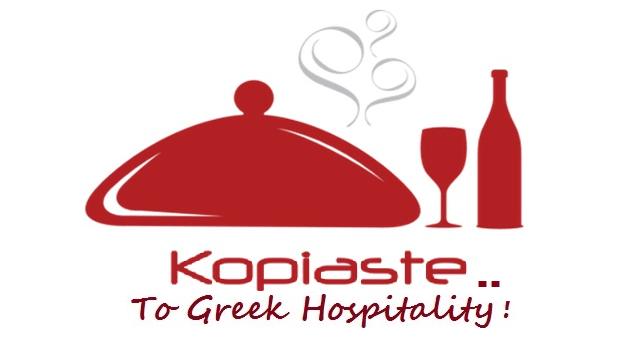
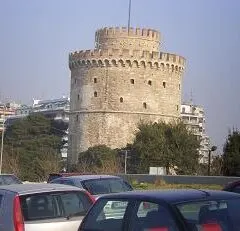
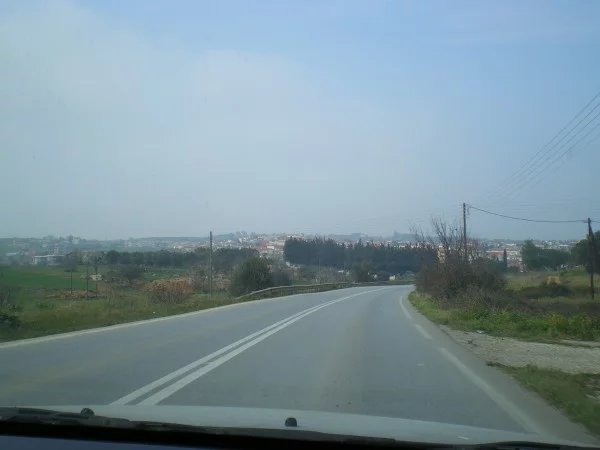
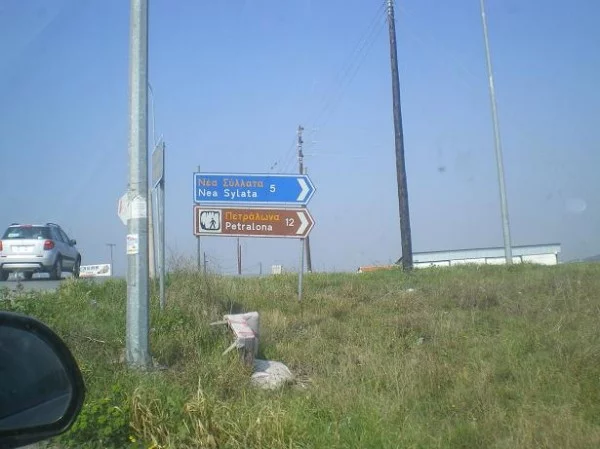
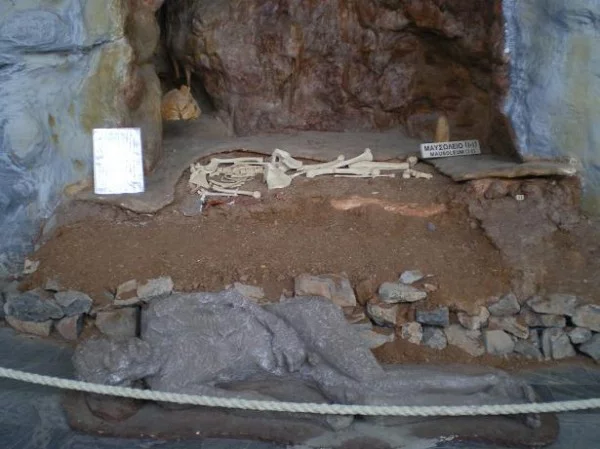
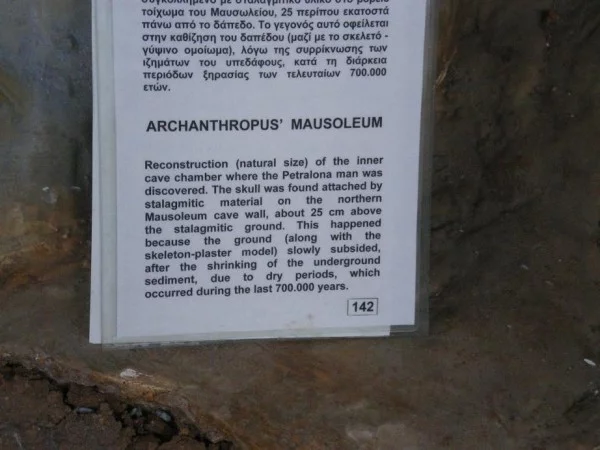
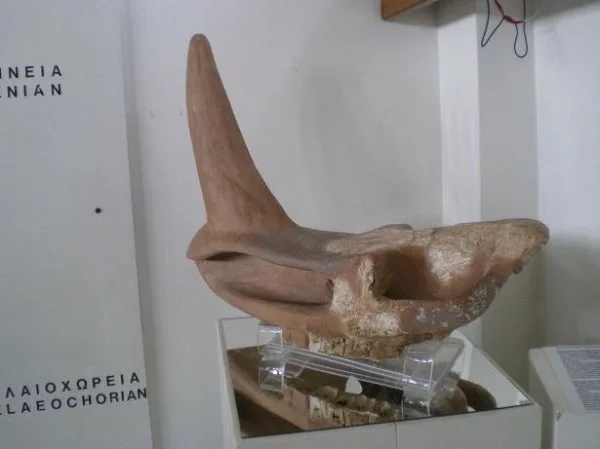
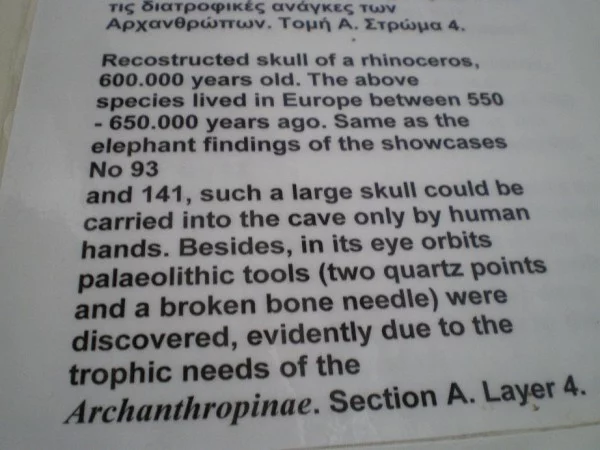
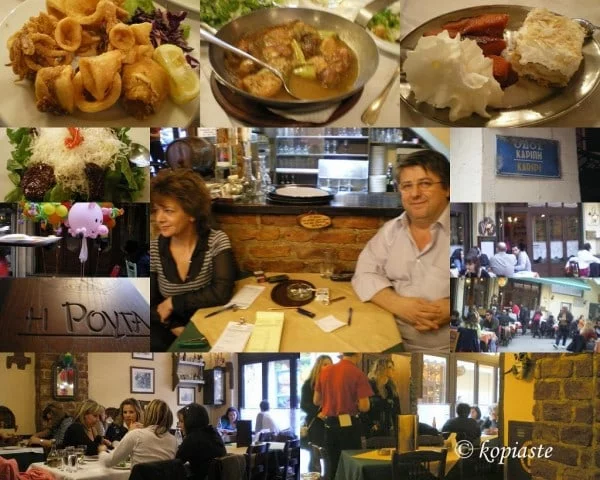
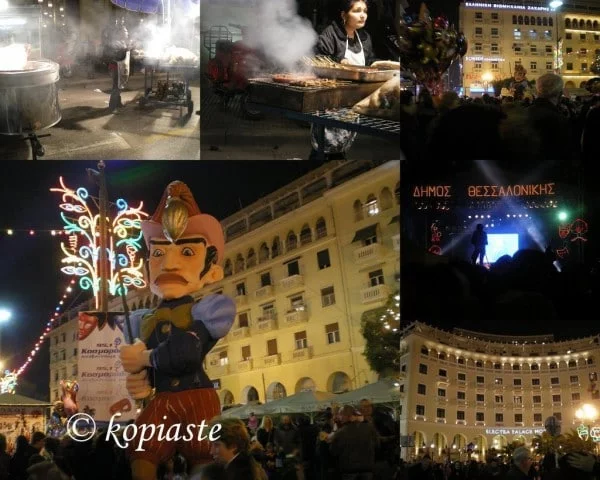
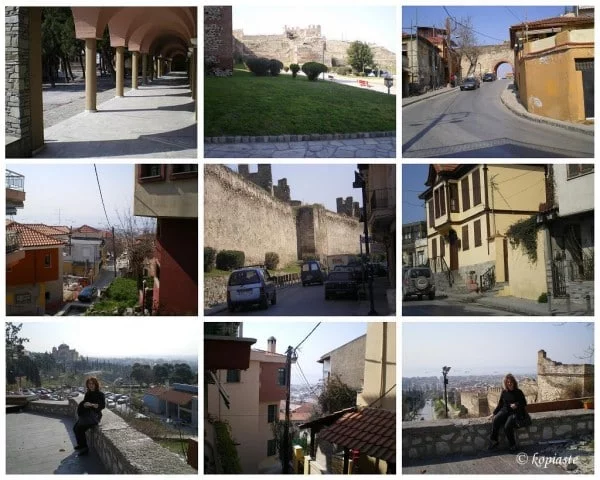
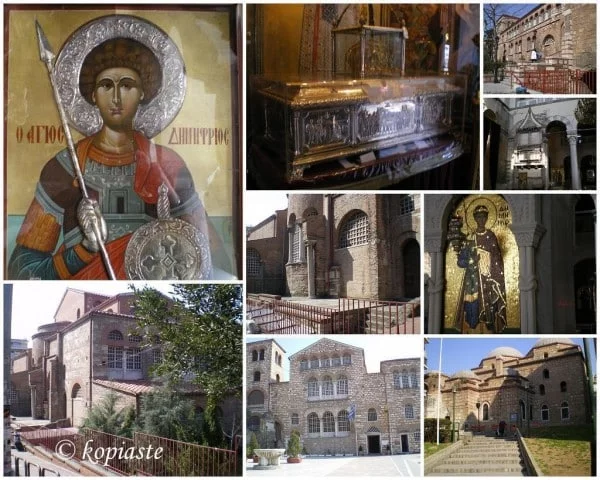
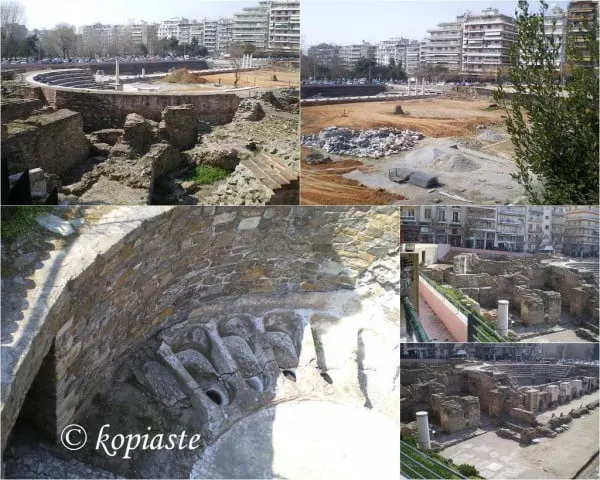
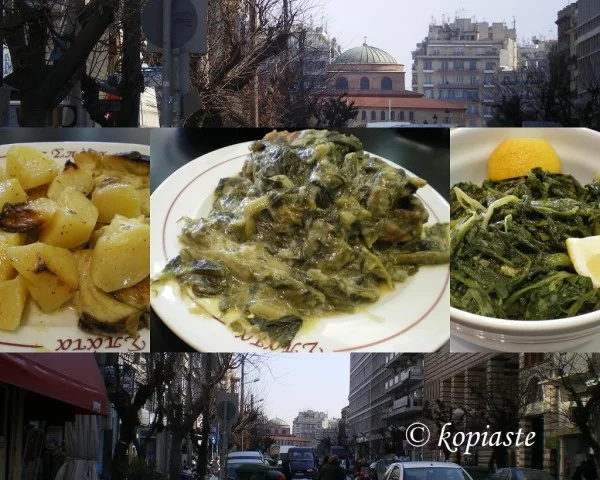
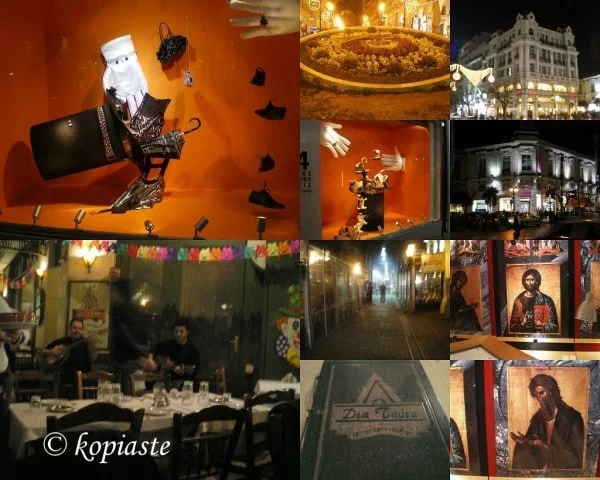
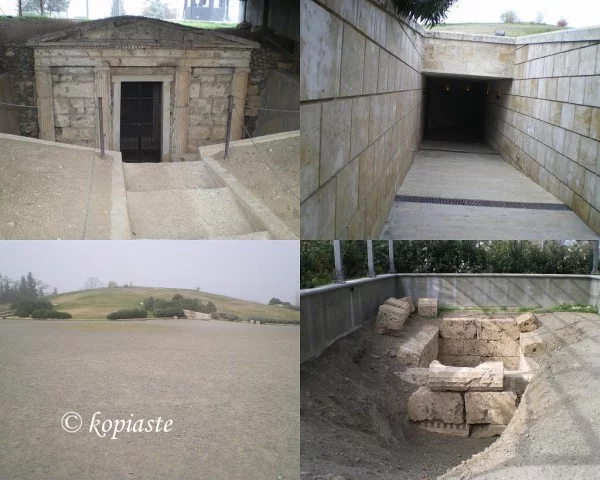
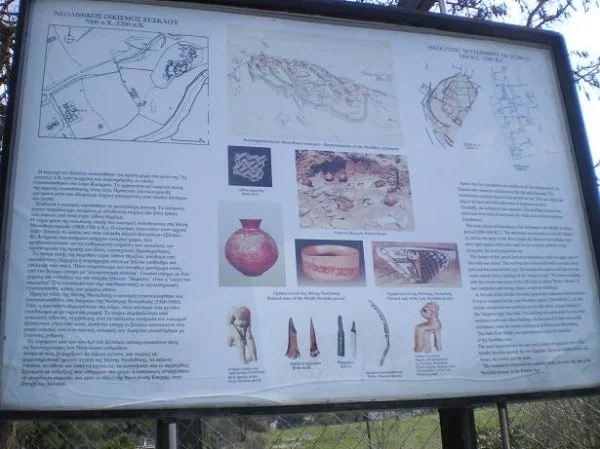
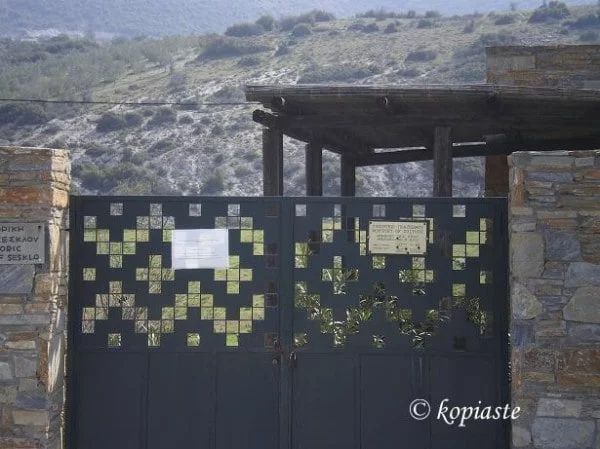
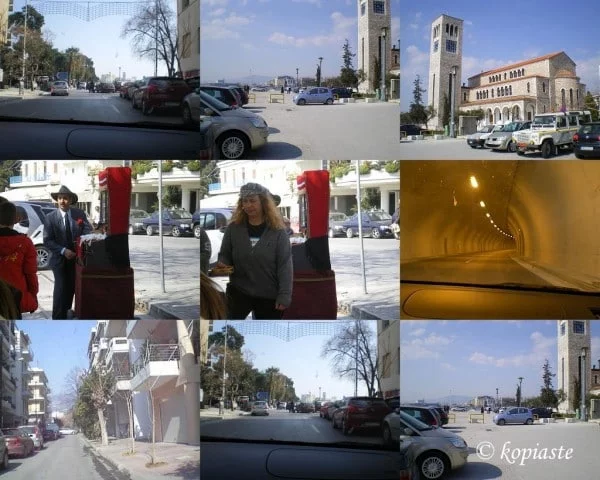
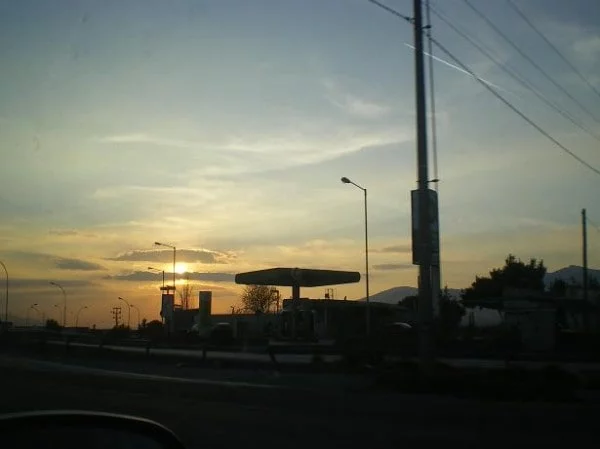
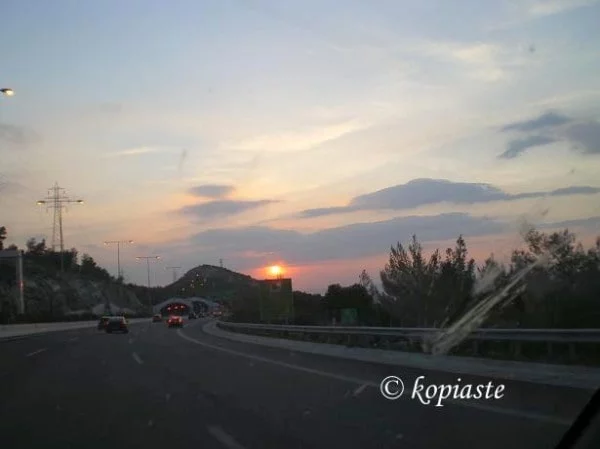
Natasha
Monday 8th of May 2017
Hello there, You have done a great job. We visited a few years ago and it was wonderful.
Natasha
Monday 8th of May 2017
Great, thanks for sharing this article.Thanks Again.
eftychia2011
Thursday 20th of January 2011
That was a wonderful and interesting trip. Thank you for sharing. I did not know that Ladadika was a part of the Jewish quarter.
Ivy
Tuesday 16th of December 2008
Yianni, thanks a lot for the additional information. Shall pass them on to my friend.
giannis24
Tuesday 16th of December 2008
Smurdesh (nowadays Krystallopigi) was a Macedonian village of about 2.500 people in late 19th- early 20th century. At that time Macedonia was part of the Ottoman-Turkish Empire.
It was located on the main commercial road from Macedonia to nowadays Albania (Korica). There were 3 churches (St George the greatest of them) and 2 elementary schools, some food stores, a small hotel for travelers and a vivid public life. Many men left the village for several months/years to work elsewhere (Southern Greece, Bulgaria, and Minor Asia).Those hardworking men brought together with their profits, the waves of change-new ways of thinking in an agricultural environment but also the seeds of nationalism in a religious - centered community.
This process made the village despite its mountainous character the most prosperous, progressive village in the whole Korestia area. It was the center of many revolutionary movements against Ottoman-Turkish authorities. There were also bitter divisions between the Greek Macedonian and the Bulgarian Macedonian faction of the village induced by Bulgarian propaganda and bands who were terrorizing the former. (Korestia is called the valley between Kastoria and lake Little Prespa).
During the first decade of 20th century a great number of its inhabitants started to migrate to US and Canada temporarily at first but after 1910 in a permanent basis. The village was liberated by the Greek army in the fall of 1912 and became part of Florina district although it is closer to the city of Kastoria. Because of the new Greek-albanian border the village lost the significance it had in the past being part of main commercial road and started to decline. In the decades to come because of the ongoing urbanization in Greece, the greek civil war and the migration to US, Canada and Australia most of the population left the village.